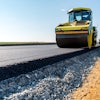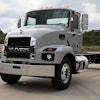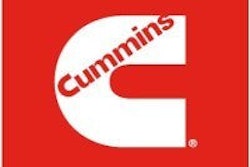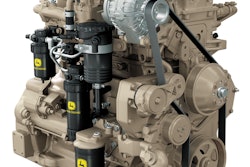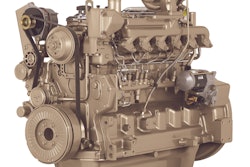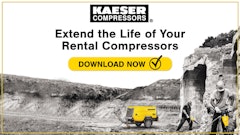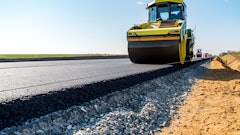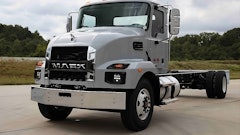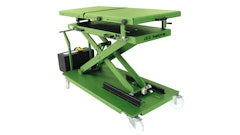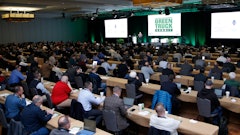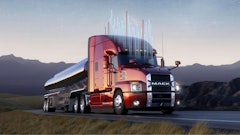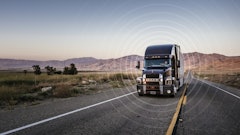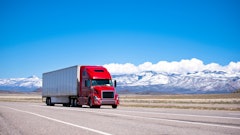
Stringent on-road emissions regulations have led to the adoption of many emission control strategies, including common rail fuel injection, electronic engine controls, exhaust gas recirculation (EGR) and, most recently, diesel particulate filters (DPFs). Several solutions developed for on-highway engines have also been adopted for off-road use. But many technologies simply aren't practical for off-road application.
"The heavy-duty on-road engines are all big engines - you are talking about 200 to 400 hp," says Enrique
Sauerteig, director of compliance and certification, Deutz. Many of these technologies can be transferred to larger off-road engines. "The bigger engines that we have for off road have electronic controls, common rail technology - features that are very similar to what has been used in the on-road market."
However, Tier III regulations apply to off-road engines from 49 to 751 hp. Price becomes a real issue when it comes to adopting existing technologies for the smaller engines. "The cost issue is going to be greater on the smaller engines because of the ratio between the cost of the emissions control system and the cost of the engine," Sauerteig points out.
In addition, smaller engines do not have to meet the same standards as larger models.
"The standards for off-road engines are classified in power categories," says Sauerteig. The larger the engine, the more stringent the regulations. "We have managed to meet Tier III off-road requirements on the small engines simply with internal measures - like optimization of the combustion system and improvements to the injection system - without the need for electronic controls."
Off-highway engines must also fill a wider variety of applications. "Off-highway applications have such a broad range of installation, duty cycle and horsepower requirements," says Bruce Farrar, Cummins Inc.
Multiple solutions
Smaller off-road engines don't require the complex solutions developed for on-highway regulations.
"Because the emissions levels that each market must achieve are substantially different, on-highway and off-highway engine manufacturers use different technologies," says Doug Laudick, product manager, John Deere Power Systems.
In fact, manufacturers employ different strategies based on the engine size and application.
For example, John Deere Power Systems developed three different platforms for its Tier III engines. "There is no such thing as a one-size-fits-all solution to the Tier III challenge," says Laudick. "What differentiates the three platforms is the level of emissions control technology employed. PowerTech M engines (42 to 99 hp) feature economy of design, a fixed-geometry or wastegated turbocharger, mechanical controls, a mechanical unit pump fuel system or a mechanical rotary fuel system."
Then you step up in horsepower. "PowerTech E engines (60 to 200 hp) are a simple emissions solution that feature a fixed-geometry turbocharger, full-authority electronic controls and a high-pressure common-rail fuel system or electronic unit pump fuel system," says Laudick.
At the top of the line is the more complex PowerTech Plus engines (149 to 600 hp) that feature cooled EGR, a variable-geometry turbocharger, state-of-the-art engine control unit and electronic unit injector system or high-pressure common-rail fuel system.
"These technologies overlap across displacement options, and the only engines that are available in just one platform are the PowerTech Plus 9.0L and 13.5L," says Laudick. "So it has more to do with offering customers multiple technology solutions than it does with letting the technology be dictated by the engine size."
Clearly, no one solution fits every application. "There are many ways to meet the new regulations. And given the range of engines to which the regulations apply, it's critical to match the right solution with the right application," says Farrar. "The industry's solutions range from controlling the byproducts of combustion in-cylinder to recirculation of exhaust gas back to the combustion chamber with cooled EGR."
Compatibility issues
Some on-road technologies transfer to off-road engines; others do not.
"Both similarities and differences exist among the technologies used to meet the emissions standards for on- and off-highway engines," says Laudick. "Most of the differences exist because conditions in which off-highway engines have to perform are so widely varied, as opposed to the more consistent conditions for on-highway engines. So John Deere takes technologies that have proven to be effective, sometimes in on-highway applications, and adds technologies that have proven to be specifically suited to off-highway environments."
Cooling off-highway engines requires a different approach than what is used for on-highway models. "In on-highway applications, ram air is abundant and helps to cool an engine with the additional heat rejection requirements of highly advanced, emissions technology," says Farrar. "Lack of ram air becomes problematic for off-highway applications such as excavators, skid-steer loaders, pavers and other construction equipment."
Cooling the new engines is one of the greatest challenges. "Whatever we do to reduce emissions is going to put more heat into the cooling system," says Sauerteig. This will require bigger charge air coolers and larger radiators. "You need to move more cooling air through the coolers."
Differences between on- and off-highway fuels present another challenge. "The availability of low-sulfur fuels becomes important when looking at aftertreatment or cooled EGR solutions," says Farrar. "Off-highway fuel today can contain sulfur up to the 4,000- to 5,000-ppm ranges. Sulfur levels above 500 ppm can be problematic for some NOx reduction solutions such as cooled EGR, and aftertreatment methods such as NOx adsorber catalysts." Such low-sulfur fuels are not mandated until October of 2007 for off-highway markets, but are available through the on-highway market.
The environment experienced by on-highway engines is also much different than for off-road engines.
"Off-highway engines have to perform in harsh, rugged conditions - dusty construction sites, extreme hot or cold, etc. - so it's not simply a matter of adapting technologies from current on-highway engines," says Laudick. "It's more a question of what technologies are needed to specifically meet off-highway emissions regulations. Each engine technology carries a cost, and selecting the appropriate level of technology is critical to remaining competitive in the off-highway market segment. "
Tier IV looms
Proper technology selection will become even more crucial as Tier IV approaches. Starting in 2008, engines under 75 hp will begin to fall under Tier IV emissions limits. Even more restrictive limits for larger engines will be phased in through 2014.
"The off-highway regulations known as Tier IV/Stage III establish extremely low levels of oxides of nitrogen (NOx) and particulate matter (PM)," says Farrar. "These standards will ultimately drive the use of aftertreatment technologies for a large portion of off-highway engines. There are several combustion and aftertreatment technologies aimed at NOx reduction - cooled EGR, selective catalytic reduction (SCR), NOx adsorbers and lean-NOx catalysts."
The variety of off-road equipment makes meeting Tier IV/Stage IIIB more of a challenge due to the lower volumes sold. "What might be cost effective for Class 8 trucks, sold in units of tens or hundreds of thousands a year, is not as easily done or as cost effective when you talk about the variety of off-highway equipment that any manufacturer of equipment would make," Farrar points out.
"The harsh working environments in which the non-road equipment is used can make Tier IV/Stage IIIB an even greater challenge - not insurmountable, but a challenge," he continues. "As we look to Tier IV, the differences from on-highway become somewhat more pronounced - from the availability of ram air to packaging constraints. Tier IV Final/Stage IIIB will require very close design integration between turbo/engine and aftertreatment."
Tier III solutions did not require aftertreatment. "To date, Cummins emission reduction efforts for off-highway engines have been achieved in-cylinder through improving combustion technology," says Farrar. "To reach Tier IV Final/Stage IIIB PM reductions, it's assumed that all manufacturers will be forced to develop forms of aftertreatment technology. Cummins A Series engines in the 31- to 48-hp range already meet Tier IV Interim requirements today, and will require no changes to the engines until Tier IV Final begins in 2013, at which time some form of aftertreatment technology will be applied."
The use of DPFs will add cost and possibly expand the engine footprint. "We do not see DPFs being utilized on Tier III engines," says Laudick. "However, looking forward to Interim Tier IV, DPFs will most likely be utilized to meet off-highway emission regulations."
"For Tier IV, we will need aftertreatment devices; there is no question about that," Sauerteig agrees. Engine size will likely affect which device is used. "There are many different types of devices, from the very passive catalytic converter to a very sophisticated SCR system. The SCR will use urea injection into the exhaust system. From what we see today, there is going to be a need for SCR on the bigger engines." But he is quick to add that this can change as new technology emerges.
Performance gains?
Engines designed to meet current Tier III emissions regulations are more efficient than the previous generation.
"Certainly, there is a performance improvement by the introduction of electronic controls on the engines," says Sauerteig. "As we go down the road to Tier IV, with all of the aftertreatment devices, it is very difficult to predict whether there is going to be a performance gain. There may be some areas where you see a gain. It is going to be a higher cost for the owner for sure."
Laudick asserts, "We are confident that we will be able to offer performance gains with off-highway emissions technology going forward. However, these gains will be accompanied, in many cases, by higher cost to the OEM and end user for engines and any associated aftertreatment technologies required to meet future emissions regulations. In addition, the cost of engine and vehicle maintenance for the different levels of technology will undoubtedly increase, as well."
Maintenance will gain in importance. "As we have to comply with more and more stringent emissions requirements, there are some side issues that become very important," says Sauerteig. "Heat rejection, maintenance of the engine and fuel filtration become very critical. For older engines, people were using whatever fuel they could get, and fuel filtration was never a big issue. Nowadays, fuel filtration is very critical. We have fuel filters with 3-micron filtration capability. The presence of water in the fuel and the quality of the oil to be used are critical."


